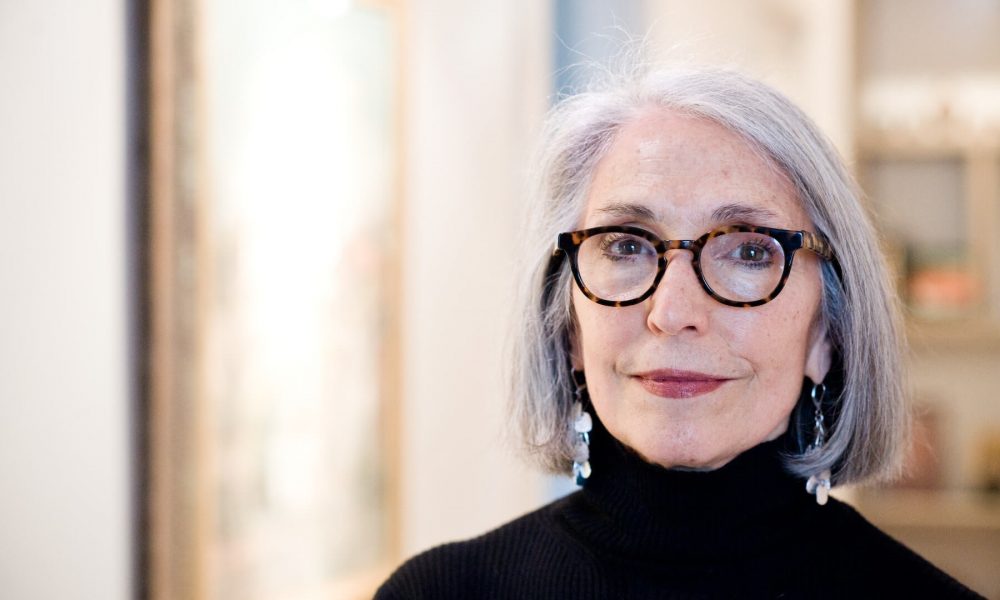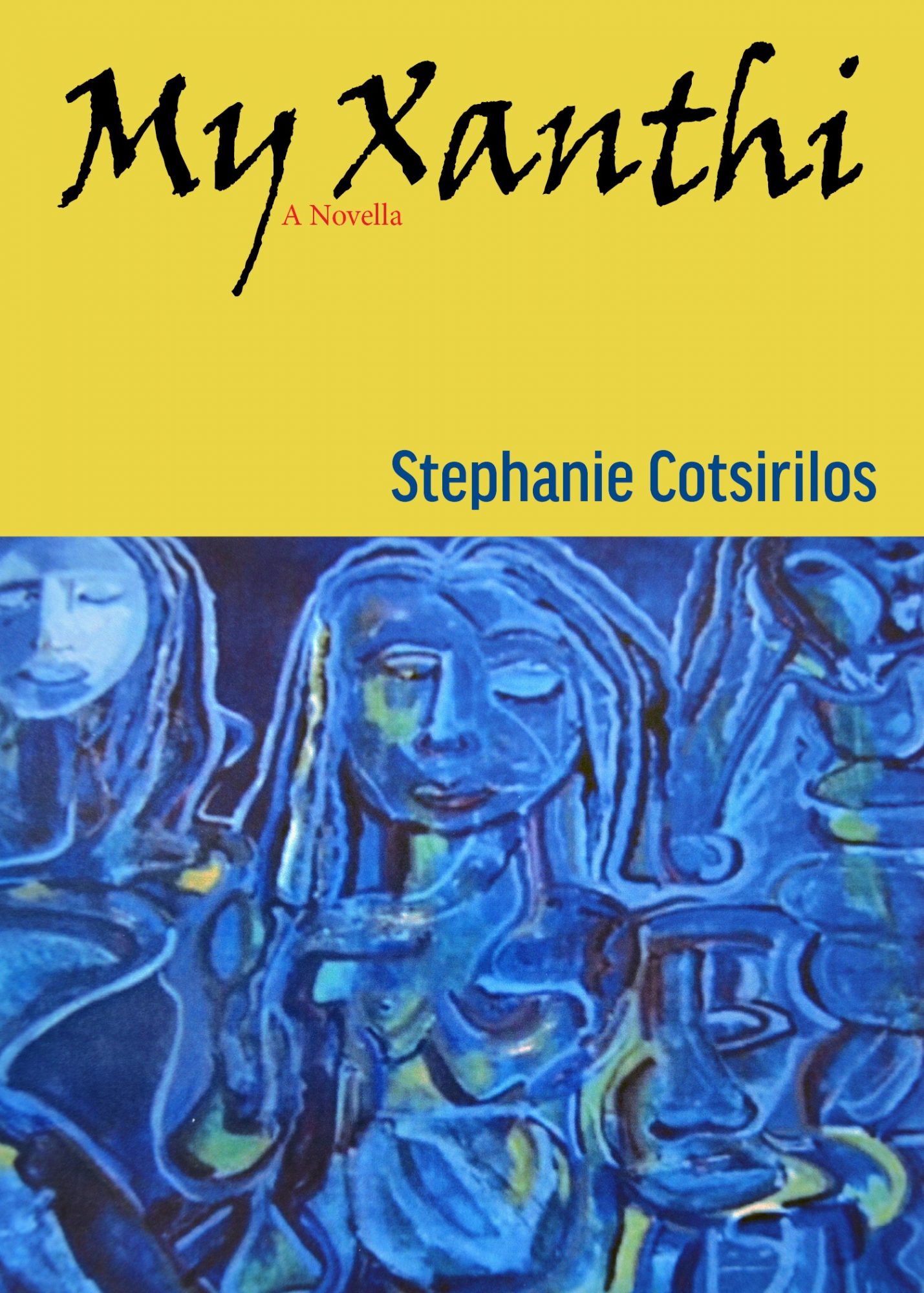

Today we’d like to introduce you to Stephanie Cotsirilos.
Alright, so thank you so much for sharing your story and insight with our readers. To kick things off, can you tell us where you live and how you connect to LA?
I live in Portland, Maine. However, the setting around the lawyer/narrator of my novella, My Xanthi, is Southern California, which a branch of my family calls home. In fact, I traveled to LA to research My Xanthi and drove through neighborhood after neighborhood to see if any of them fit my novella’s story. That drive deepened my appreciation of the diverse histories and populations that make up the unique sections of LA. Clearly, if you’re going to set your story there, you need to choose your location carefully – and as it happened, for a variety of reasons, I settled instead on Riverside for my narrator’s home base. Nevertheless, the Inland Empire, LA, and San Diego, from their energizing mix of cultures to the color of their sunrises, set the tone for the book.
On top of that, My Xanthi was originally published by a small, university-affiliated indie press located in LA. Once that contract ended, I chose to self-publish My Xanthi’s second edition via Ingram, with the interior and cover designed by Jesse Sanchez (https://www.jsanchezart.com) and cover artwork by the exquisite, late Valerie Deas (https://www.valeriedeasart.com) of the Bronx. I’m grateful that, like my own family, my novella has roots at the edges of both the Atlantic and the Pacific: Maine, the Bronx, and, yes, LA.
The part of the novella rooted in Greece lives within me.
NEIGHBORHOOD:
My Portland home – and the writing I do in it – are located near the Downtown Arts District and historic Old Port. Renovations begun in the 1970s helped preserve the Old Port’s cobblestone streets, 19th-century buildings, and a working waterfront – all of which attract visitors from across the globe. The sense of history here includes the Portland Freedom Trail. Its bronze markers, designed by Daniel Minter (https://danielminter.net), trace landmarks of the Black community and abolitionists who conducted Maine’s Underground Railroad toward Canada. Related themes of displacement, escape from violence, longing for justice, and undercurrents of love, loyalty, and trust echo through My Xanthi. Portland’s surrounding historical context and the liberty to seek quiet and focus allowed me to write my novella here.
MY STORY:
My extended family’s roots in Greece, Peru, and Asia shaped my journey as an author, lawyer, and performing artist. The journey began in Chicago, where I was born. Though my first language was Greek, English followed rapidly. When I was five, and someone asked, “What’s your name, little girl?” I answered, “Judy Garland.” My immigrant grandmothers were horrified.
I grew up, earned degrees in comparative literature and music from Brown and Yale, and went to New York for a career on and off Broadway – creating the role of The Critic in the Tony Award-winning musical Nine and writing songs and scripts produced at Manhattan Theatre Club, Playwrights Horizons, Writers Theatre, and other spaces.
To my family’s relief, I returned to Yale for a law degree and joined a New York firm. My late husband and I formed a family with Scottish, Greek, and Indigenous Peruvian ancestry. After his death, my small son and I moved to Maine.
I kept writing: legislative drafting, opinion pieces, strategic documents for nonprofits, poetry, and fiction. As Interim Executive Director of Portland Ballet, I returned full circle to the arts and soon after, was accepted into The Writers Hotel conference in Manhattan, joining U.S. and international peers.
I’m a published author now. Yet, were they alive today, my grandmothers might not understand why I’d travel thousands of miles to writers’ retreats or why I spend so many hours in solitude at home, trying to tap whatever excellence and authenticity are within my reach. It’s also unlikely my grandmothers could read anything I’ve written. Yet I hope they would be secretly proud – not least because I don’t answer to “Judy Garland” anymore, but to the name of my lineage.
I’m sure it wasn’t obstacle-free, but would you say the journey has been fairly smooth so far?
Of course, the journey hasn’t been smooth, but I wouldn’t expect it to be. For one thing, a career in the arts wasn’t my proudly assimilating, broadly supportive Greek-American family’s first choice for me. In certain respects, I had to fight for my commitment to the arts – though you’ll notice I did quite a few other things as well. None of that is bad. I’ve been lucky to have the time and good health to write at this phase of life. It’s a gift.
Thanks for sharing that. So, maybe next you can tell us a bit more about your work?
I’m the author of the novella My Xanthi and essayist in Beacon Press’ award-winning anthology Breaking Bread: Essays from New England on Food, Hunger, and Family. Twice nominated for the Pushcart Prize, my work has appeared in print and online venues, including McSweeney’s, Narrative, and Mississippi Review’s 2019 prize edition. During a first career in New York theater, my songs and scripts were produced at Manhattan Theatre Club and other venues. I’m a 2023 Sewanee Writers Conference alumna and was previously Katahdin Fellow in residence at Storyknife’s inaugural retreat for women writers in Alaska.
I specialize in prose that not only draws on my time in New York theater and law – but also meets readers where memory, humor, injustice, and resilience collide. The personal is central to my work, but so is the world within which the personal must operate. The human heart in adversity is sometimes confounding, sometimes inspiring. I care about that. For example, the posthumous letters of an immigrant woman in my novella, My Xanthi, assert love’s triumph amid Greek Civil War atrocities. In my story “Little Buzzcut,” an abuela’s spirit voice mines the pain and strength of a child separated from his mother at the U.S./Mexico border; and the moral cost to the border patrol agent who inflicted the separation. My story “Invasion, Day 3” tracks a Ukrainian school teacher who mourns her young lover even as she grips a Kalashnikov to defend against Russians, some of whom are barely more than boys.
I hope to keep writing about such characters with respect – and humor.
What do you like best about our city? What do you like least?
Likes & Dislikes about living in Portland, Maine:
Located on Maine’s unceded Wabanaki homelands, Portland punches above its weight – a lovely, walkable place widely known for its outstanding restaurants. Portland’s Beaux Arts City Hall – whose clock tower I can see from my loft’s eastern windows – was designed by the firm of Carrère and Hastings, which in 1897 won the competition to build the New York City Public Library. Today, many of Portland’s arts organizations are far better than you’d expect in a city this small – dance, chamber music, innovative, challenging contemporary work, and more. A short drive will take you to Maine’s magnificent rocky shore, and a two-hour drive south will take you to Boston. Drive east, and you’ll see more rugged beauty in towns like Rockport and Camden. Drive north, and you’ll approach woods, hiking, the sacred Mount Katahdin, and the stunning Acadia National Park. There’s a sense of community in Portland that’s hard to define; but the longer you live here, the more you feel it.
Still, I wish there were direct rail service from the south to Portland and – a pipe dream at the moment – rail service north. Public transportation within Portland is developing but is still very modest compared to that found in other American cities. If, for economic or health reasons, you don’t have a car, it can be difficult to get around town or access services. Our unhoused neighbors are increasing in number, and many other people who once rented in the city can no longer afford to. These are not small problems; they are critical and resemble those in LA and other cities. Though people of good will are grappling with the issues at hand, they all too often seem intractable.
There is goodness here. But it’s not accessible to everyone. We have to keep working on that.
Contact Info:
- Website: https://www.stephaniecotsirilos.com/
- Instagram: https://www.instagram.com/scotsirilos
- Facebook: https://www.facebook.com/Stephanie.Cotsirilos.Author/
- Linkedin: https://www.linkedin.com/in/stephaniecotsirilos
- Twitter: https://twitter.com/scotsirilos
- Youtube: https://www.youtube.com/@StephanieCotsirilos

Image Credits
Image 1: Photography by Judy Beedle. Image 2: Book cover designed by Jesse Sanchez. Book cover artwork by Valerie Deas.











